mobile View, to the German Version tap the flag


- Republic of Turkey
- former Ottoman Empire
- presidial republic
- own name: Türkiye Cumhuriyeti
• Flags
• Historical Flags
• Meaning/Origin of the Flag
• Coat of Arms
• Meaning/Origin of the Coat of Arms
• Aircraft Roundel
• Map
• Numbers and Facts
• History
• Origin of the Country's Name
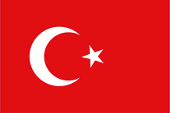
National, state, merchant and naval flag,
ratio = 2:3,
Source, by: Flags of the World





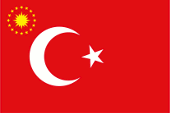
Flag ot the President,
ratio = 2:3,
Source, by: Flags of the World



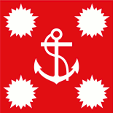
Flag of the Supreme Sommander of the Navy,
ratio = 1:1,
Source, by: Flags of the World



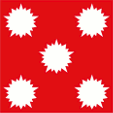
Flag of the High Admiral,
ratio = 1:1,
Source, by: Flags of the World



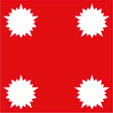
Flag of an Admiral,
ratio = 1:1,
Source, by: Flags of the World



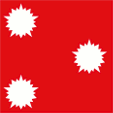
Flag of a Vice-Admiral,
ratio = 1:1,
Source, by: Flags of the World



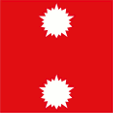
Flag of a Rear-Admiral,
ratio = 1:1,
Source, by: Flags of the World



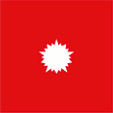
Flag of a Commodore,
ratio = 1:1,
Source, by: Flags of the World




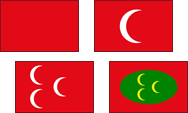
15th–18th century,
possible variants of the flag of the Ottoman Empire,
Source, by: Die Welt der Flaggen, Die Welt im bunten Flaggenbild
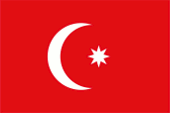
1793–1844,
Flag of the Ottoman Empire,
Source, by: Wikipedia (EN)



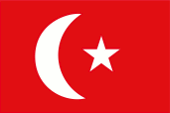
1844–1923,
Flag of the Ottoman Empire,
Source, by: commons.wikimedia.org, histor. Abb./Pic.




ca. 1844–1919,
Merchant flag of the Ottoman Empire,
Source, by: Flags of the World




ca. 1844–1912,
Merchant flag for Albanians,
Source, by: Flags of the World



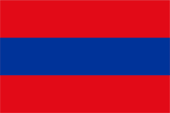
ca. 1844–1919,
Merchant flag for Greeks,
Source, by: Flags of the World



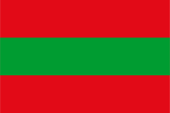
ca. 1844–1919,
Merchant flag for Muslims on their way to Mecca,
Source, by: Flags of the World



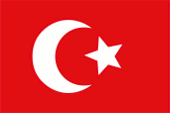
1890–1923,
Flag of the Ottoman Empire,
Source, by: histor. Abb./Pic.



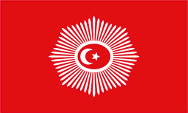
to 1922,
Flag of the Sultan,
Source, by: histor. Abb./Pic.



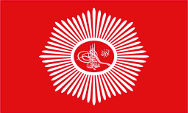
to 1922,
Flag of the Sultan at sea,
Source, by: histor. Abb./Pic.



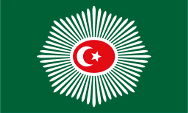
to 1924,
Flag of the Caliph,
Source, by: Wikipedia (EN)



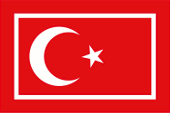
1919–1937,
Custom's flag,
ratio – ratio = 2:3,
Source, by: Die Welt im bunten Flaggenbild



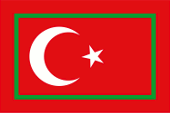
from 1937,
Custom's flag,
ratio – ratio = 2:3,
Source, by: Die Welt im bunten Flaggenbild



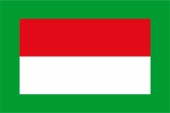
from 1936,
lag of customs vessels,
ratio – ratio = 2:3,
Source, by: Die Welt im bunten Flaggenbild




pilot jack,
ratio = 2:3,
Source, by: Flags of the World
This type of flag was abolished in the 20th century, today is:
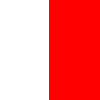 Pilot on board
Pilot on board
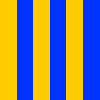 Call for Pilot
Call for Pilot



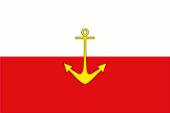
Differentiational flag for pilot's vessels,
ratio = 2:3,
Source, by: Flags of the World
This type of flag was abolished in the 20th century, today is:
 Pilot on board
Pilot on board
 Call for Pilot
Call for Pilot




from 1937 (?),
Flag fof the harbor's supervision,
ratio – ratio = 2:3,
Source, by: Die Welt im bunten Flaggenbild



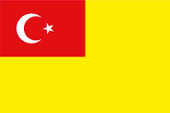
from 1937 (?),
Quarantine flag,
ratio – ratio = 2:3,
Source, by: Die Welt im bunten Flaggenbild



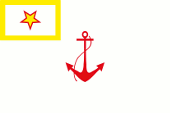
from 1937 (?),
Flag of the harbor's commandants,
ratio – ratio = 2:3,
Source, by: Die Welt im bunten Flaggenbild




The flag of Turkey shows a white crescent and a five-pointed white star on a plain red bunting. In its current form, the flag was introduced around 1844 and officially and legally confirmed on 5th of June in 1936, according to other sources on 29th of May in 1936. Red and white are now considered the national colours. Turkey is the heir to the Ottoman Empire. Its flag history begins at the beginning of the 14th century with a white banner that was presented to Osman Bey by the Anatolian Seljuk ruler Mesud II. From the 15th century onwards, the colour red came into use, the colour of Caliph Omar I., which now appeared on flags and banners. These could be solid red or show one or more white crescents. There was no standardization yet. Around 1793 – under the rule of Sultan Selim III. – was mentioned for the first time that a white star was placed next to the crescent moon on the flag. It is said to be related to the Crescent Order founded in 1801 and therefore – like on the order – the star had eight rays. It is considered a sign of victory. In 1844, during the time of the Tanzimat reforms, the eight-pointed star is said to have changed to the five-pointed star, which symbolizes the human being. In principle, the current design of the flag would have been introduced that year. However, there was still no standardization, so the appearance of the crescent and star varied again and again and was by no means uniform. This caused, especially in the area of private flagging, e.g. merchant flags, to numerous variants that have been included in flag catalogs as a merchant flag. For example, there are also images of red flags with a star in the top corner, which are supposed to represent the merchant flag. In general, the merchant flag was actually a solid red bunting, but there were variants for certain nationalities or population groups that held a privileged position within the Ottoman Empire.
It was not until 1936 and 1937, under the rule of Mustafa Kemal Atatürk, that regulations were created that defined the appearance of the flag. On 25th of January in 1985, the dimensions of the flag were determined by Decision Number 85/9034 Article 4 of the Council of Ministers. The colour-shade of the red seems to be defined; an indication can be found: Hexadecimal #E30A17. A Pantone colour can be derived from this: Pantone 1788 c.
The star is actually the symbol of the city of Constantinople and it represents the Virgin Mary. When the Turks conquered this city in 1453 after years of migration and over 100 years of war against the Eastern Roman Empire, they adopted the star into their symbolism and it became a symbol of victory. The star as an addition to the red crescent flags of the Ottoman Empire appeared quite lately at the beginning of the 18th century. The crescent moon is an ancient and widespread pagan symbol of humanity. It represents fertility and health. The Turks probably brought it with them from the steppes of Central Asia. Of course there is also a legend. It makes the crescent moon appear to the ruler Osman I. (1259–1326), the founder of the Ottoman dynasty and the Ottoman Empire, in a dream of fertile lands to be subjugated by Islam. Another legend goes back to Sultan Murad II. (1404–1451), who, after the Battle of Amselfeld (Kosovo) in 1448, saw the reflection of the moon in a lake made of the blood of the killed Christians. Ultimately, all Islamic symbolism, in the form of the crescent and star, goes back to the Ottoman Empire. The last caliph (from the Abbasid house) was executed in 1258. The caliph, successor to Muhammad, was the religious and secular head of the "Islamic Empire". Around 1460, the Caliphate was revived by the ruler of the Ottoman Empire. This role became particularly important when the Turks conquered the city of Mecca in 1517 and took over the role of supreme guardians and preservers of the holy places. The control over the holy sites was lost during the First World War (Mecca 1916, Medina 1918). The Caliphate was abolished by the Turkish National Assembly in 1924. When independence movements arose in parts of the Ottoman Empire in the 19th century, Abdul Hamid II. successfully countered these movements with the unifying bond of pan-Islamism. He made a green flag (colour of the Prophet Mohammed's coat) a symbol of pan-Islamism and placed the Turkish symbols on it. The flag of Islam was created. The Turkish Caliphate and the Ottoman Empire have introduced the symbolism of the crescent and star into the world of Islam over the centuries.
Many images of special flags are known from historical flag catalogs, e.g. from the areas of shipping authorities, pilotage or customs, most of which were introduced in 1937. These have been abolished today, on the one hand due to international standardization in pilotage, on the other hand they have been replaced by the general flag and customs have also lost their special status. Customs is now subordinate to the Ministry of Commerce, which does not use its own national emblem. All ministries have their own flags, mostly white with a round logo and inscription in red in the middle, but these are not national emblems. There are also separate flags for the units of the Turkish army (army, navy, air force), which are also not national emblems and are not used on vehicles or ships.
Source:
Flags of the World,
Wikipedia (TR),
World Statesmen,
Die Welt der Flaggen,
Flaggen und Wappen,
Flaggen Wappen Hymnen,
Flaggen und Wappen der Welt,
Flaggen Enzyklopädie,
Flaggen-Atlas Erde,
Die Welt im bunten Flaggenbild,
Volker Preuß


National emblem of Turkey,
Source, by: Wikipedia (DE)
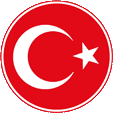
Emblem of Turkey for non-governmental use,
Source, by: Wikipedia (DE)

Emblem of Turkey in the diplomatic service,
Source, by: Wikipedia (DE)

Emblem of Turkey with inscription,
Source, by: Corel Draw 4
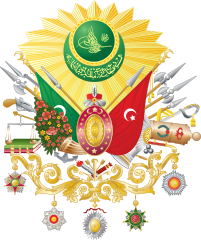
1882–1922,
Coat of arms of the Ottoman Empire,
Source, by: Juristiltins,
Public domain, via Wikimedia Commons

Since the founding of the republic (1923), Turkey has no longer had a coat of arms in the traditional sense. Instead, an emblem is used in various designs that shows a crescent moon and star, usually in a red oval, as was used in the Ottoman Empire since 1876. After the introduction of the republican constitution, this high oval was retained and is occasionally supplemented by the name of the country at the top: "Türkiye Cumhuriyeti" → "Republic of Turkey". Sometimes the name of the country also appears in gold. The coat of arms of the Ottoman Empire essentially showed an oval shield in the center and a flag on the left and right; the green flag stood for Rumelia, the European part of the country, and the red flag for the Asian part of the country.
Source:
1.) Wikipedia (DE),
2.) Wikipedia (DE)


since 1972
Aircraft Roundel,
Source, by: Wikipedia (EN)

1918–1972,
Aircraft Roundel,
Source, by: Wikipedia (EN)

Location:
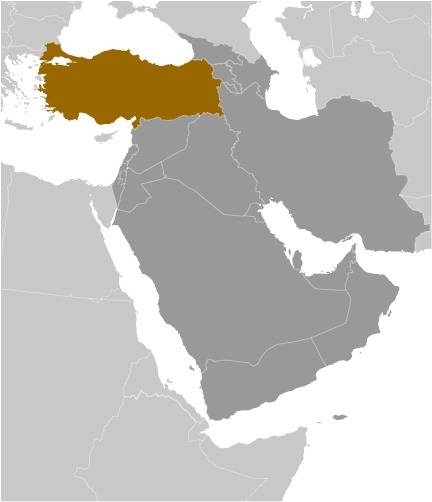
Source: CIA World Factbook
Map of the country:
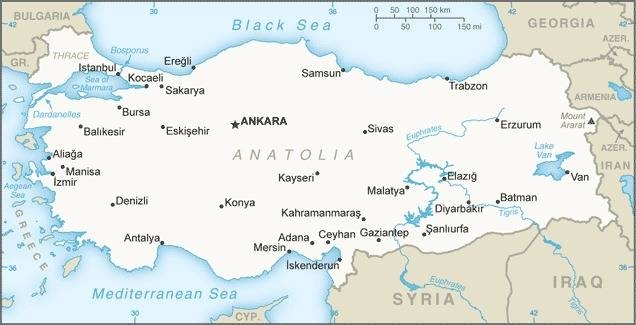
Source: CIA World Factbook
Ottoman Empire:
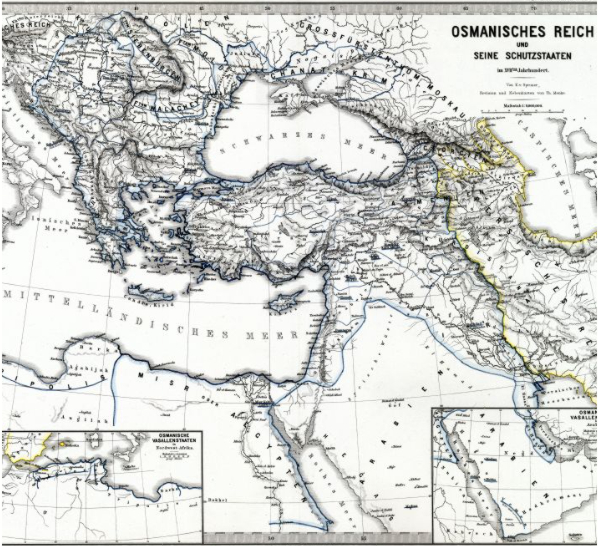
Source: Hand-Atlas für die Geschichte des Mittelalters und die neueren Zeit von Spruner und Menke

Area: 302.534 square miles
Inhabitants: 85.279.553 (2022), thereof 70% Turks, 19% Kurds, 4% Zaza, 3% Circassians, 2% Bosniaks, 3% Arabs, Albanians, Lases
Religions: 92% Muslim, 2% other religions (Christians, Jews, Yazidis), 6% Non-Religious
Density of Population: 282 inh./sq.mi.
Capital: Ankara, 5.747.325 inh. (2021)
official Language: Turkish
other Languages: Kurdish, Zazaki, Arabian
Currency: 1 Turkish Lira (TRY, TL) = 100 Kuruş
Time Zone: GMT + 3 h
Source:
Wikipedia (DE)

11th century · Turkish tribes (under them the Seldshuks) invade from Central Asia over Bukhara into several historic islamic empires (Empire of the Karakhanids, Empire of the Ghasnawids and Empire of the Bujids), the adope the Islam and advance to Anatolia into the heart of the East Roman Empire (Byzantium)
1097 · Kylydsch-Arslan establishes in Eastern Anatolia the until 1307 existing Seljuk Empire
1300 · the Turk Osman I. leads the Turkish tribes in an religious war against Byzantium and conquers Western Anatolia
1326–1375 · conquests of the Ottomans (the descendants of Osman) in Western Anatolia, Rumelia and Thrakia
1375–1461 · conquests of the Ottomans in Eastern Anatolia, Northern Anatolia, Greece, Bulgaria, Macedonia and Serbia
1451 · the Ottoman Mehmed adopes the title of a sultan and revives some years later the caliphate
1453 · conquest of Constantinople
1461–1517 · conquests of the Ottomans in Albania, Bosnia, Eastern Anatolia, Crimea, Syria, Palestina, Egypt and Hedjas
1517–1566 · conquests of the Ottomans in Georgia, Cyrenaica, Tripolitania, Iraq, Asir, Yemen, Hungary, Siebenburgen, Walachia, Moldavia and Transnistria
1571 · sea battle of Lepanto, loss of the predominance in the Mediterranean Sea, but conquest of Cyprus
1683 · unsuccessful siege of Vienna
1699 · loss of Hungary, Siebenburgen and Podolia
1739–1783 · loss of Bukovina, Transnistria and Crimea
1812 · loss of Bessarabia
1829 · Greece becomes independent
1830 · Serbia becomes independent, Algeria gets lost to France
1875 · state bankrupt
1876 · constitution
1878 · constitution abolished
1877–1878 · Russian-Turkish War, defeat of Turkey
1878 · Berlin Congress, independence for Romania, Serbia and Montenegro, autonomy for Bulgaria, Cyprus is to cede to United Kingdom
1881 · France occupies Tunisia
1882 · Great Britain occupies Egypt
1908 · Austria-Hungaria occupies Bosnia-Herzegovina
1909 · constitution
1911–1912 · Italian-Turkish War, Italy conquers Tripolitania and Cyrenaica
1912–1913 · Balkan Wars, the Ottoman Empire loses all european possessions besides Istanbul and Adrianople
1914–1918 · First World War, the Ottoman Empire belongs to the Middle Mights and fights against the Entente, 1915–1916 Armenian genocide, since 1917 retreat at all front lines besides in Caucasus Mountains, 1918 only Anatolia and the Caucasus Mountains are under control, Greek troops occupy Smyrma (Izmir)
1920 · peace of Sèvres, loss of all possessions besides Anatolia, Smyrna is to cede to Greece, independence for Kurdistan
1921–1922 · re-conquest of Smyrna and expulsion of all Greeks under Mustafa Kemal
1922 · the Ottoman Mehmed VI. becomes seted down, end of the Ottoman Empire
1923 · proclamation of the Republic of Turkey, peace of Lausanne, Turkey gets its today’s territories
1924 · abolition of the caliphate
1923–1945 · modernization of the country, neutrality
23rd of February 1945 · declaration of war to the German Empire in the Second World War (1939-1945)
1952 · joining to NATO
1955 · joining to Bagdad Pact (CENTO)
1960 · military coup d’état
1963 · association treaty with the EWG (today EU)
1974 · occupation of Northern Cyprus
1980 · military coup d’état
1982 · new constitution
since 1991 · military quarrels with the Kurds
since 1995 · grow strong of islamistic forces
1996 · Turkish-Greek quarrels in the Mediterranean Sea and on Cyprus
2003–2014 · out of the lines of the islamist-nationalist AKP-Party comes the prime minister, the country achieves stability, but also islamization by increased ignoring of the democratic-secular constitution
2014 · out of the lines of the islamist-nationalist AKP-Party come the Prime Minister and the President, further islamization and conversion into an authoritarian dictatorship, violation of the democratic-secular constitution, military quarrels with the Kurds
15th of July in 2016 · attempted coup d’état by the military, starting of a wave of purges in judiciary, military, administration and education
Source:
Atlas zur Geschichte,
Wikipedia (D),
World Statesmen,
Discovery '97,
Weltgeschichte,
Volker Preuß

The name "Turkey" is very old and was used for the land of the Turks which they occupied after their arrival from Middle Asia, even under the rule of the Ottomans, the descendants of Osman I., as then was in use the denomination "Ottoman Empire".
Source: Volker Preuß


![]()











































